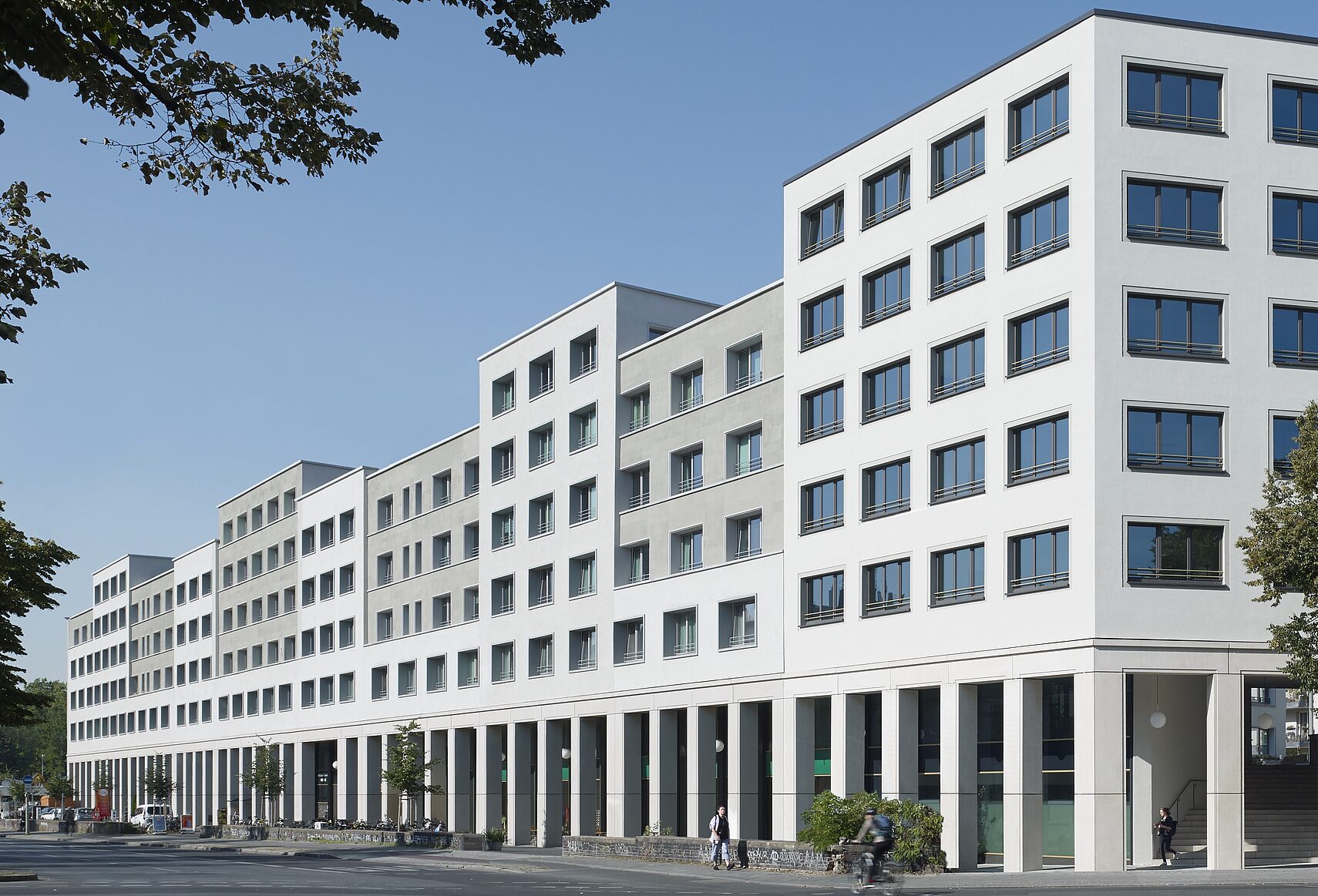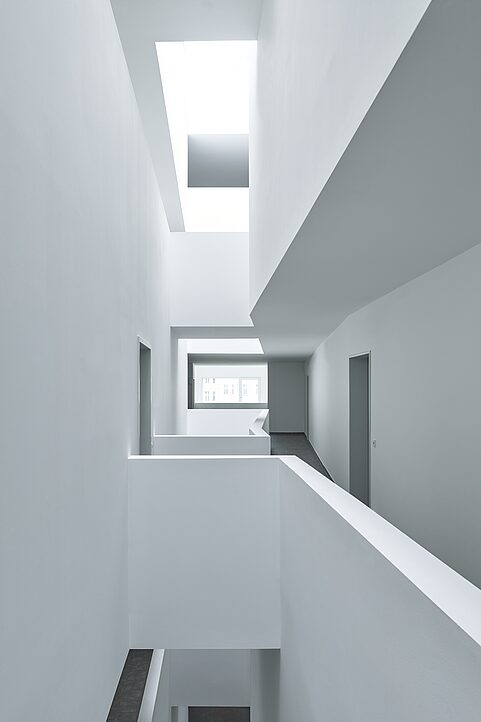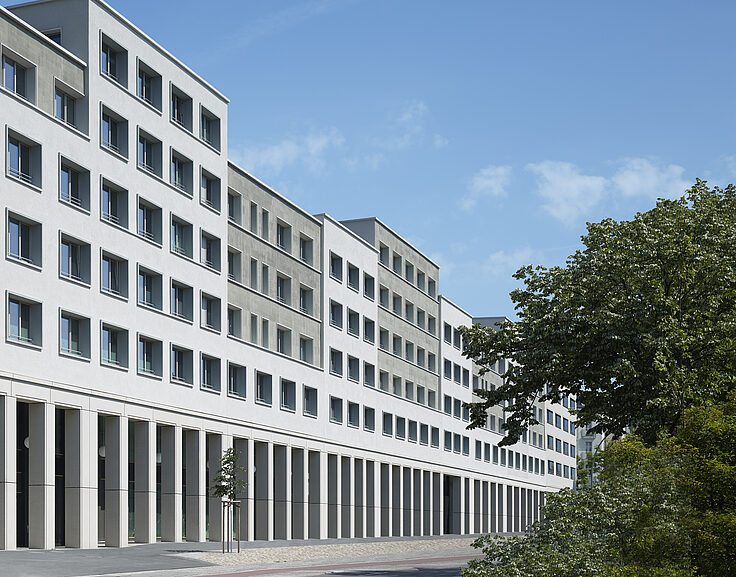More content
Mixed use

The Möckernkiez housing cooperative was planning an intergenerational community housing scheme to be run as a self-managed model project with clear environmental, sustainability, accessibility and social objectives for a 3-hectare site bordering Yorckstraße and Möckernstraße in Berlin.
An initial urban planning exercise generated a blueprint for a new car-free neighbourhood comprising some 470 homes built to Passivhaus standards, community facilities and business premises that would deliver “diversity and quality of life for all”. The plans are based on a design principle that has succeed in producing a harmonious overall impression while at the same time forging a clear identity and offering a wealth of variety – all on a human scale.
Quality and cost efficiency
The modified planning approach permitted deep, compact buildings that help optimise area-to-volume ratio, efficiency and so costs, but without sacrificing quality. Land-use allocation was formulated to shape a neighbourhood that would foster internal and external communication as well as providing private areas and shared interior and exterior space.


Insights
To create a harmonious overall impression while still achieving a degree of variety, we developed a set of design rules that made space for a wealth of individual characteristics and design freedoms.
One element of the development is a block containing 123 residential units and business space. Divided into individual, self-contained ‘houses’, its interior is fully modulable subject to structural constraints. A schedule of typologies developed for these functionally neutral spaces reflects the wish list of housing options that underpins the resident-led integrated, intergenerational concept. Apartment sizes vary from 27m2 studios to 150m2 7-bedroomed flats. In addition, the variety of different floor plans means that studios can be combined into residential communities.
Private and community outdoor spaces
The facades vary across the development, which presents a sober front to Yorkstraße and an open pattern of private and communal outdoor spaces facing the gardens. The double-storey arcades in the plinth zone reveal the building’s public aspirations, an idea reinforced by the service and retail units provided on the ground floor.
Almost all of the flats have a private outdoor space, be it balcony, loggia or terrace, while the communal rooms, roof terraces, playgrounds and landscaped courtyards are open to all.

